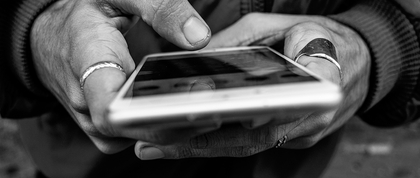
Since its launch in July 2022, the 988 Suicide and Crisis Lifeline has had great potential to save lives and improve population mental health. But even well-intentioned and well-designed policies can fail to have the desired impact because of challenges related to implementation. With support from a grant from the National Institute of Mental Health, our team is conducting a five-year study focused on 988 implementation.
This research comes at a time when more than 90 percent of U.S. adults believe the country is in the midst of a mental health crisis, and public health statistics indicate that they’re right. Rates of suicide, depression, anxiety and general psychological distress have been increasing in recent years, and these trends were accelerated by stressors of the Covid-19 pandemic.
In 2020 a national policy was signed into law making “988” the new three-digit dialing code for the Lifeline, which callers previously reached by dialing a 10-digit number. The transition to an easier-to-remember, three-digit number — similar to 911 — is intended to encourage help-seeking among a larger segment of the U.S. population. The new law also changed the hotline’s name from the National Suicide Prevention Lifeline (exclusively focused on suicide) to the 988 Suicide & Crisis Lifeline (including mental health and substance use crisis in addition to suicide). This change was also intended to promote more help-seeking from the Lifeline.
Our implementation research so far has produced a study documenting tremendous variation among the states, in both the extent to which Lifeline call volume increased when 988 launched, and in the amount of money that states dedicated to 988 implementation. In another study we found that state legislators — who are key to successful 988 implementation — talked about 988 on social media when it launched in 2022, but that this attention was not sustained. We also found that only 30 percent of state legislators’ 988 posts actively encouraged help-seeking from the Lifeline.
Most recently, with support from a pilot grant from GPH, we published a study presenting results from a nationally representative survey that assessed awareness about, and potential future use of, 988. We found that:
- Forty-two percent of U.S. adults had heard of 988, and that this proportion was significantly higher among people with serious psychological distress than those with no distress (47 percent vs. 40 percent).
- The use of 988 was significantly higher among people with serious distress (six percent) than those with moderate distress (one percent) or no distress (0.2 percent).
- Only 25 percent of respondents indicated they would be “very likely” to reach out to 988 if they or a loved one were experiencing suicidality or a mental health crisis.
Taken together, these findings are promising because they suggest that awareness and use of 988 is highest among those most in need. However, the results also highlight the need for communication campaigns that encourage help-seeking from 988.
The 988 Suicide and Crisis Lifeline is a major public health initiative, and it’s likely going to take years until its potential is fully realized. But there’s no doubt that implementation research is important in determining why 988 is, or is not, working and in identifying who benefits from it.

Jonathan Purtle, DrPH, MSc
Associate Professor of Public Health Policy & Management; Director of Policy Research, Global Center for Implementation Science